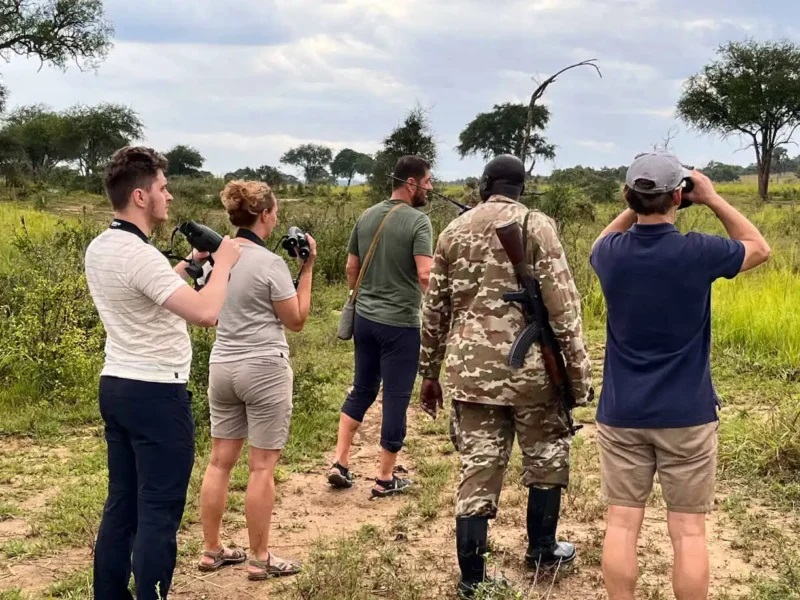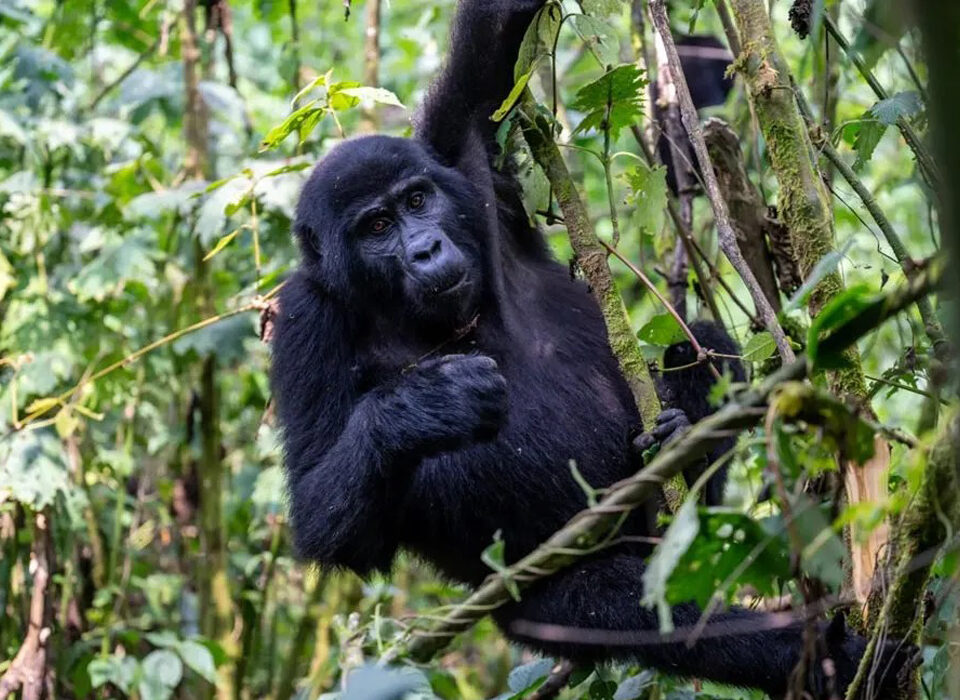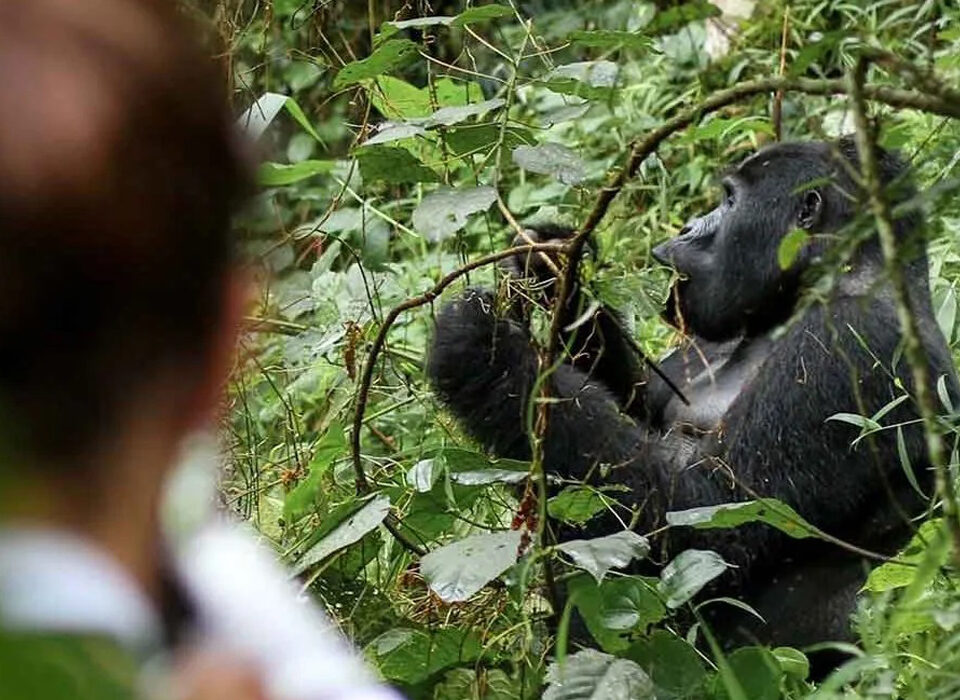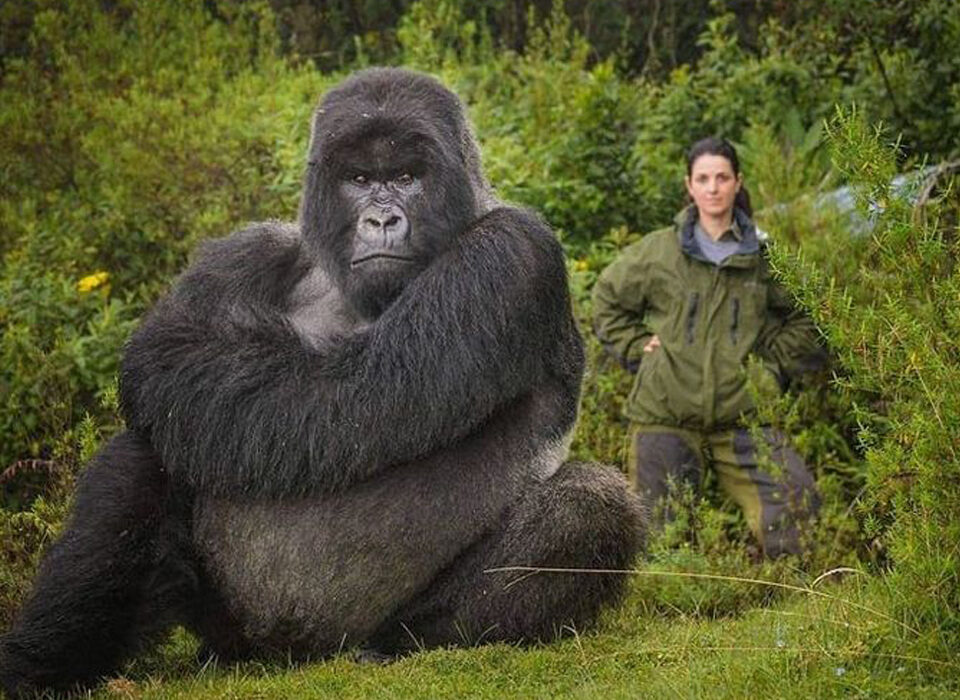- GET IN TOUCH WITH US:
- +256 753518160
- +256 777842166
- info@experiyatourcompany.com

Can Children Participate in Game Drives?
September 27, 2025
Bird Watching Paradise in Uganda
September 29, 2025What Should I Wear on a Game Drive Safari?

Uganda, often called the “Pearl of Africa,” is one of the most rewarding safari destinations on the continent. The country showcases a diverse landscape of lush rainforests, sprawling savannahs, snow-capped mountains, and sparkling lakes, making it a paradise for nature enthusiasts and wildlife lovers alike. A Ugandan safari promises unforgettable experiences such as Gorilla Trekking, Chimpanzee Tracking, and thrilling game drives across well-protected national parks and reserves.
One of the most common questions travelers ask is: “What should I wear on a game drive safari? Can I see the Big Five in Uganda?” This guide addresses these questions in detail while helping you prepare for a safe and memorable adventure.
Dressing for Comfort and Protection in Uganda’s Wild
Choosing the right attire for a game drive significantly enhances both comfort and safety. Whether exploring the open plains of Murchison Falls National Park or tracking tree-climbing lions in Queen Elizabeth National Park, your clothing choices make a big difference.
For optimal comfort, opt for light, breathable fabrics in neutral tones such as khaki, beige, or olive green. These colors blend with the environment, minimizing your visibility to wildlife and reducing the attraction of insects. Avoid bright colors like white, red, or blue, which can startle animals or attract tsetse flies.
Long-sleeved shirts and trousers are essential to protect against sunburn, insect bites, and scratches from thorny vegetation. Complement your outfit with a wide-brimmed hat or cap for sun protection, sunglasses to shield your eyes, and a lightweight scarf to guard against dust.
Early morning and evening drives can be surprisingly chilly, so bring a fleece jacket or light sweater. Footwear should be sturdy, preferably closed shoes or lightweight hiking boots, ensuring comfort and safety while walking in rugged terrain.
Essential Safari Accessories
Beyond clothing, a few accessories can elevate your safari experience. A pair of high-quality binoculars helps spot distant or elusive wildlife, while a camera with a zoom lens allows you to capture stunning images of Africa’s remarkable animals and landscapes.
Other must-have items include sunscreen, insect repellent, reusable water bottles, and a small backpack to keep your belongings organized. For treks into forests, such as Gorilla or Chimpanzee Tracking, gloves and gaiters can provide extra protection while navigating dense vegetation.
Proper preparation ensures that each safari activity is enjoyable and safe, whether you are on an open savannah game drive or exploring lush forests in search of primates.
Can You See the Big Five on a Uganda Game Drive?
Uganda is well-known for Gorilla Trekking, but it is also an excellent destination to observe the Big Five—lion, leopard, elephant, buffalo, and rhinoceros.
Murchison Falls National Park, the country’s largest and oldest protected area, offers opportunities to spot lions, elephants, leopards, and buffalo. With the reintroduction of southern white rhinos at the nearby Ziwa Rhino Sanctuary, visitors can complete their Big Five experience through guided rhino tracking.
Queen Elizabeth National Park, famous for its tree-climbing lions in the Ishasha sector, offers sightings of large elephant herds, buffalo, and elusive leopards. Its diverse ecosystems—from open savannahs to papyrus wetlands—support over 95 mammal species, making it a rich destination for wildlife enthusiasts.
Combining Game Drives with Gorilla Trekking
A highlight of any Ugandan safari is the opportunity to combine thrilling game drives with Gorilla Trekking in Bwindi Impenetrable National Park, home to over half of the world’s remaining mountain gorillas.
After spotting lions, elephants, and antelopes in the savannah, travelers venture into Bwindi’s misty forests for an unforgettable Gorilla Trekking adventure. Expert trackers guide visitors through dense vegetation to observe these magnificent animals in their natural habitat.
Many itineraries also include Chimpanzee Tracking in Kibale Forest National Park or Budongo Forest Reserve, both renowned for high primate densities. For those seeking an extended adventure, safaris can be combined with trips to Kenya and Tanzania to witness the Great Migration or explore the Serengeti and Maasai Mara.
Cultural Experiences to Complement Your Safari
Uganda is culturally rich, home to over 50 indigenous ethnic groups with unique languages, traditions, and customs. Safaris often include visits to local communities and heritage sites, such as the Batwa pygmies near Bwindi or the pastoralist Karamojong in Kidepo Valley. These interactions provide insight into traditional ways of life.
In Rwanda, cultural encounters can include village tours, drumming performances, and visits to genocide memorials. Travelers may also enjoy tasting local delicacies like luwombo (traditional Ugandan stew) and matooke (steamed green bananas).
Participating in these experiences enriches your journey while supporting community-based tourism and local livelihoods.
Conclusion: Plan Your Ideal Uganda Safari
When asking “What should I wear on a game drive safari? Can I see the Big Five in Uganda?” travelers can rest assured that proper preparation ensures a safe, comfortable, and unforgettable adventure.
Uganda’s wildlife, including the iconic Big Five, and opportunities for Gorilla Trekking, make it a premier safari destination. Rich cultural experiences and the possibility to extend your journey into Rwanda, Kenya, and Tanzania further enhance the adventure.
Whether you prefer luxury lodges, mid-range accommodations, or budget-friendly camping, a well-planned Uganda safari promises a unique, immersive experience in East Africa’s untamed wilderness.



